Posts Tagged: California Department of Food and Agriculture
It's Friday Fly Day!
It's Friday Fly Day--and time to post images of a syrphid fly. Syrphid flies, often mistaken for honey bees, are pollinators, too. Also known...
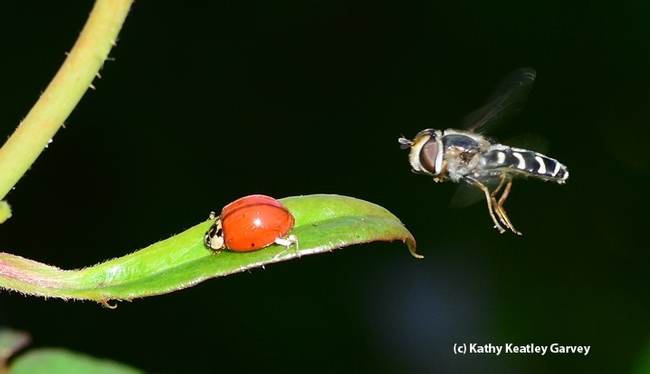
A syrphid fly, a female Scaeva pyrastri, hovers over an Asian lady beetle (Harmonia axyridis). (Photo by Kathy Keatley Garvey)
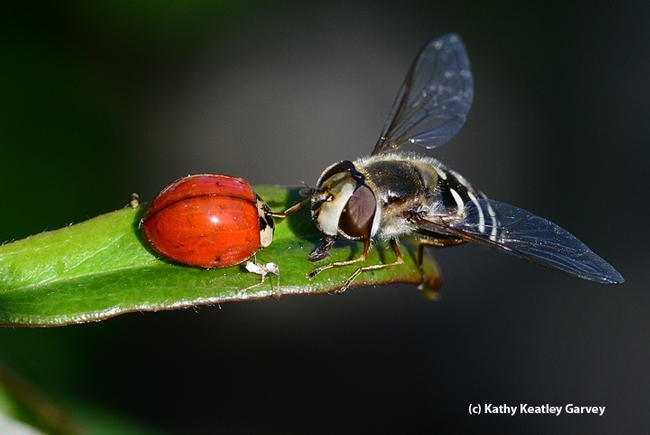
The syrphid fly licks honey dew from the head of the lady beetle, which had just feasted on the honeydew-producing aphids on a rose bush. (Photo by Kathy Keatley Garvey)
This Hover Fly Engages in Identity Theft
The wonderful world of insects... Have you ever seen a syrphid, aka hover fly or flower fly, that resembles a bumble bee? Volucella bombylans is a...
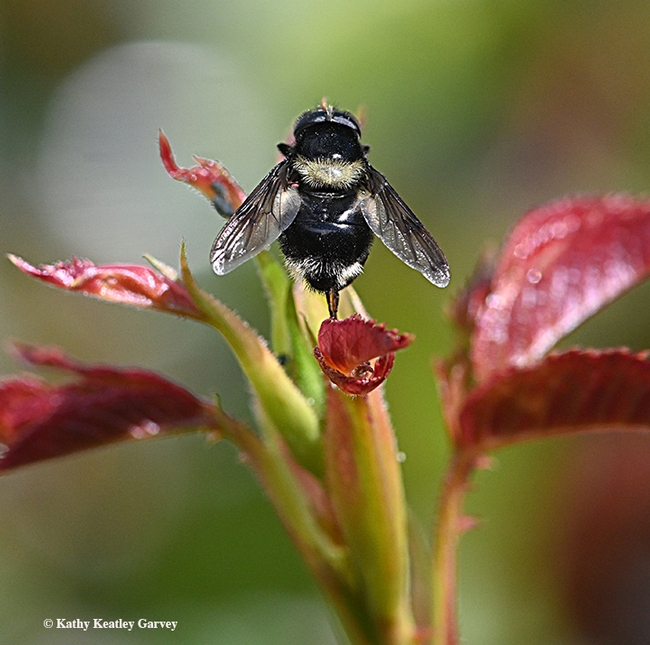
A hover fly that's a bumble bee mimic: this is Volucella bombylans complex. (Photo by Kathy Keatley Garvey)
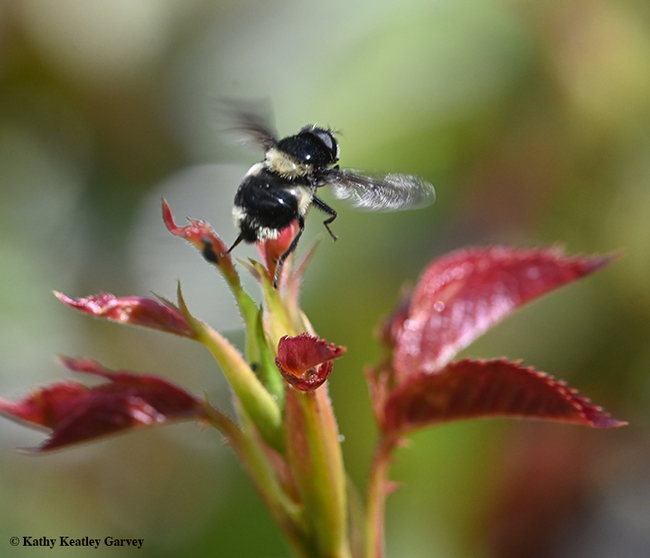
The hover fly, a Volucella bombylans complex, departs its perch. (Photo by Kathy Keatley Garvey)
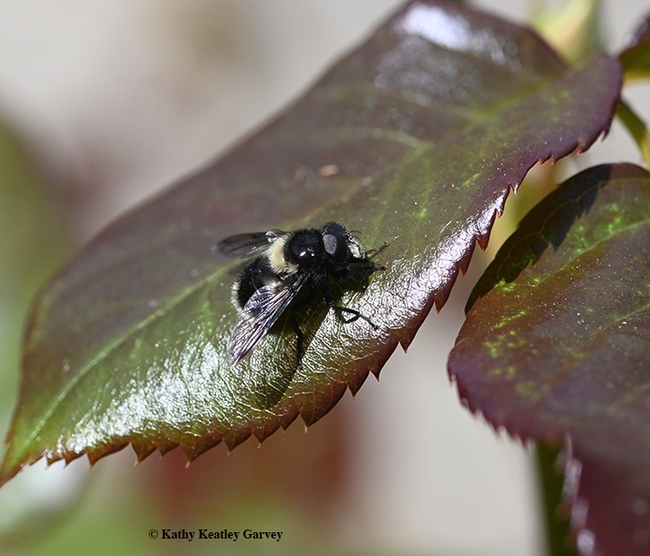
It's a fly; not a bee! Side view of the syrphid fly bumble bee mimic, Volucella bombylans complex. (Photo by Kathy Keatley Garvey)
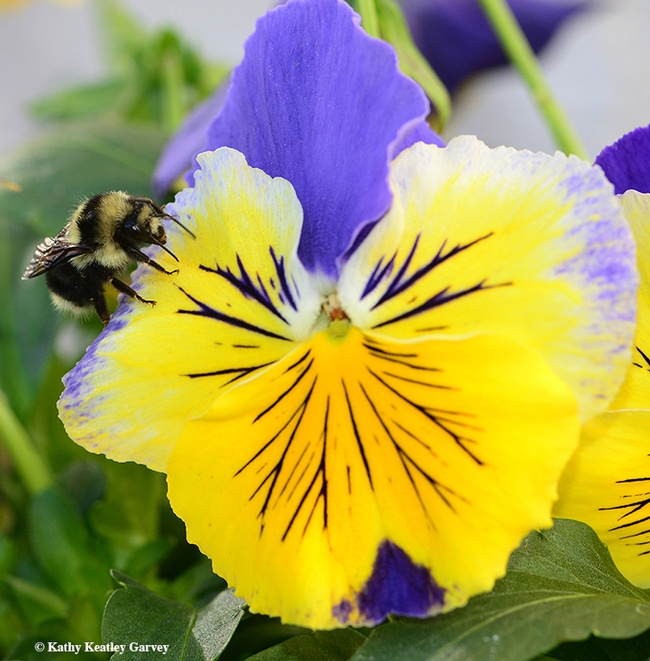
A bumble bee, Bombus melanopygus, investigates a pansy. This image was taken in Vacaville, Calif. (Photo by Kathy Keatley Garvey)
Andrew Young: Natural History of Syrphids, from Pollinators to Parasitoids
At first glance, they're often mistaken for bees, but bees they are not. They're flies. You've probably seen them hovering over flowers, which is...
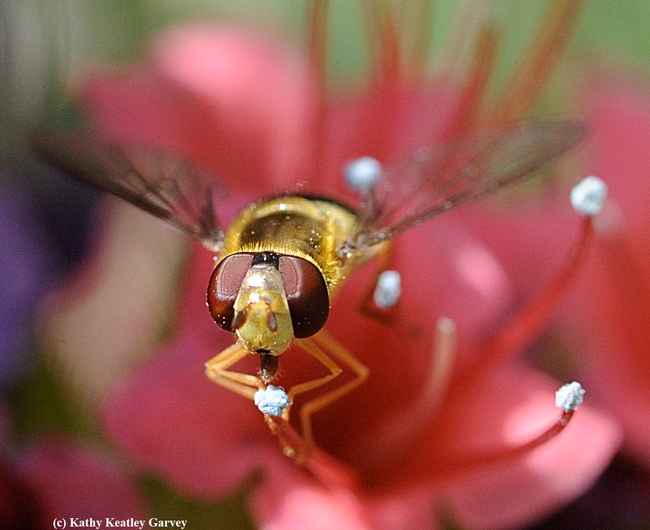
A syrphid, also known as a hover fly or flower fly, nectars on a tower of jewels, Echium wildpretii, in Vacaville, Calif. (Photo by Kathy Keatley Garvey)
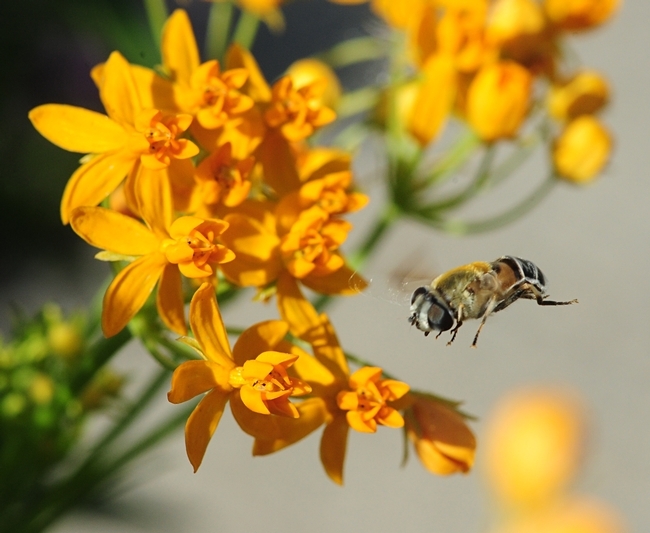
A syrphid in flight, heading toward a tropical milkweed, Asclepias curassavica. (Photo by Kathy Keatley Garvey)
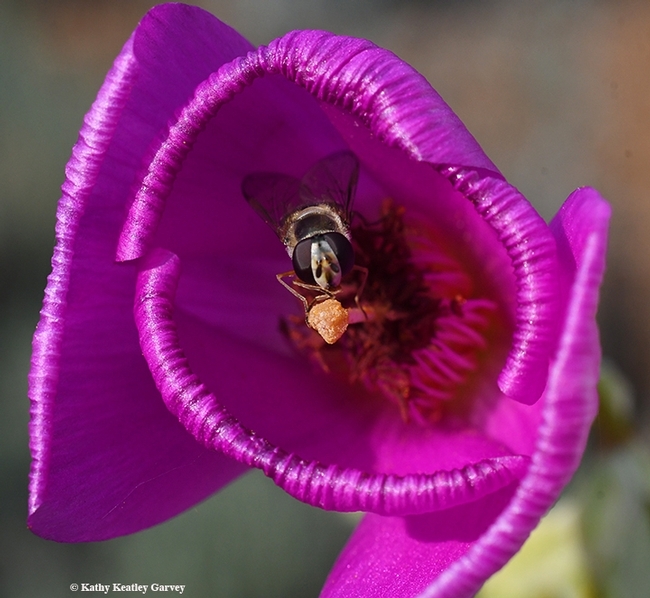
A syrphid tucked inside the petals of a rock purslane, Calandrinia grandiflora. (Photo by Kathy Keatley Garvey)
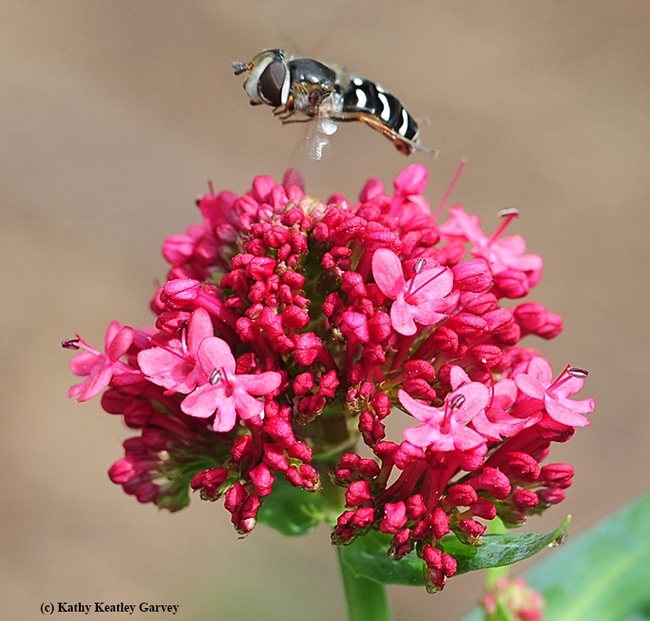
A syrphid hovers over Jupiter's Beard, Centranthus ruber. (Photo by Kathy Keatley Garvey)
Not Just Honey Bees Pollinate Almonds
It's beginning to look a lot like...almond pollination season in California. Almonds usually begin blooming around Valentine's Day, but it's often...
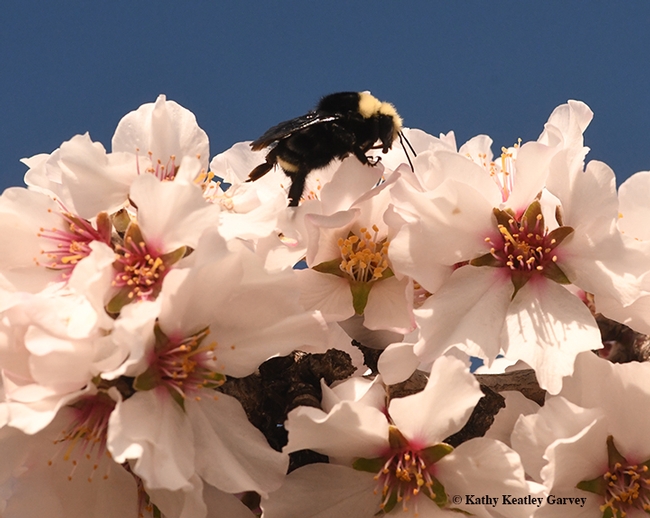
A yellow-faced bumble bees, Bombus vosnesenskii, forages on almond blossoms in Benicia, Calif., on Feb. 2. (Photo by Kathy Keatley Garvey)
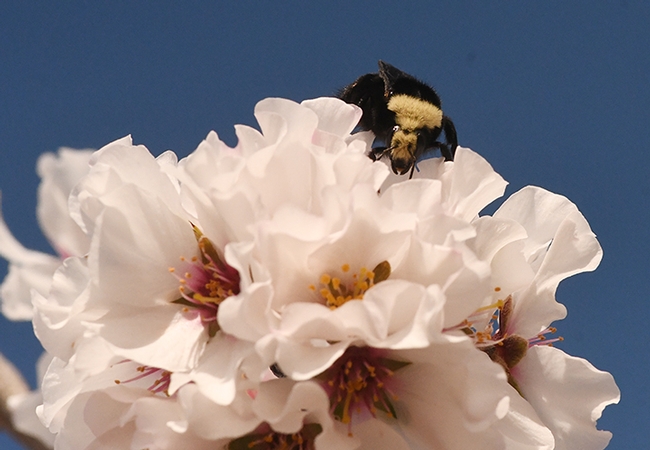
This yellow-faced bumble bees, Bombus vosnesenskii, peers up at the photographer. (Photo by Kathy Keatley Garvey)
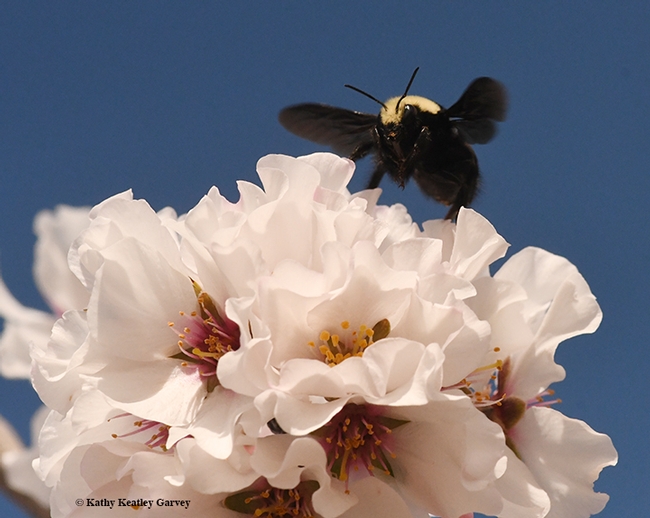
Flight of the bumble bee. This is a yellow-faced bumble bee, Bombus vosnesenskii. (Photo by Kathy Keatley Garvey)
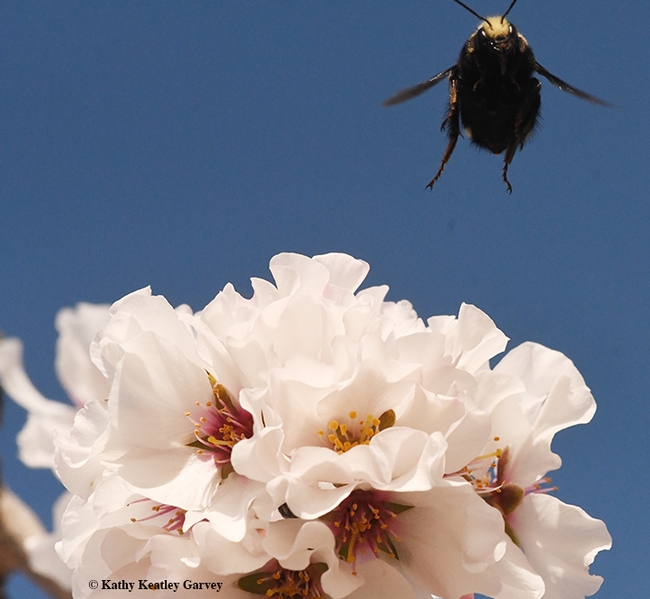
Coming right at you! Bombus vosnesenskii departs one blossom to find another. (Photo by Kathy Keatley Garvey)
Ever Seen a Snakefly?
Have you ever seen a snakefly? Not a snake. Not a fly. A snakefly! They're predators but rarely seen. They eat insects such as aphids and mites....
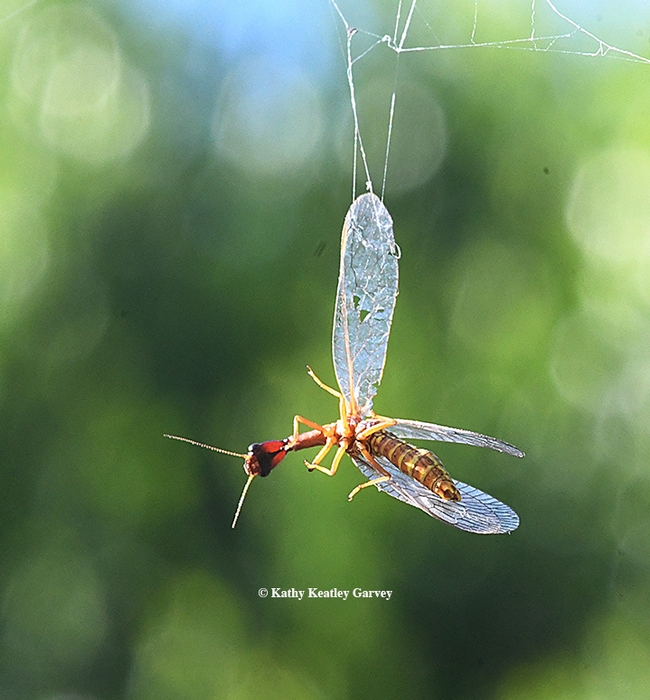
A snakefly, genus Agulla, snared in a spider web in Vacaville, Calif. (Photo by Kathy Keatley Garvey)
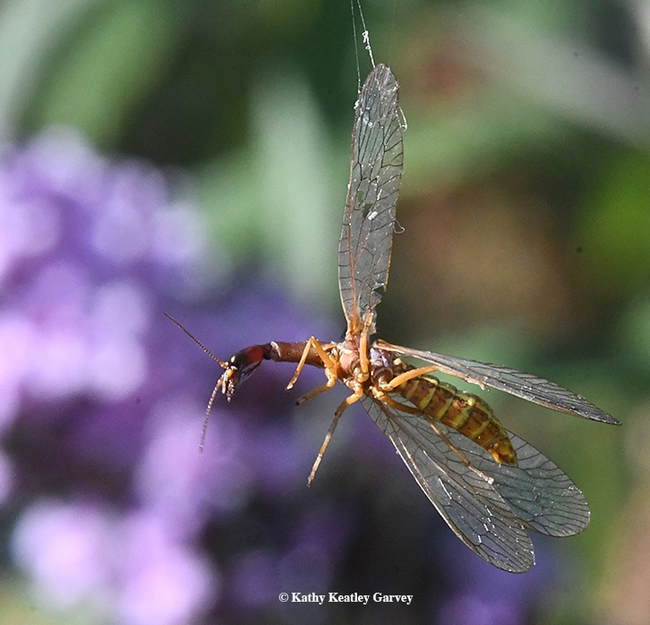
The snakefly, a predator, struggles in the spider web. The spider is out of sight. (Photo by Kathy Keatley Garvey)
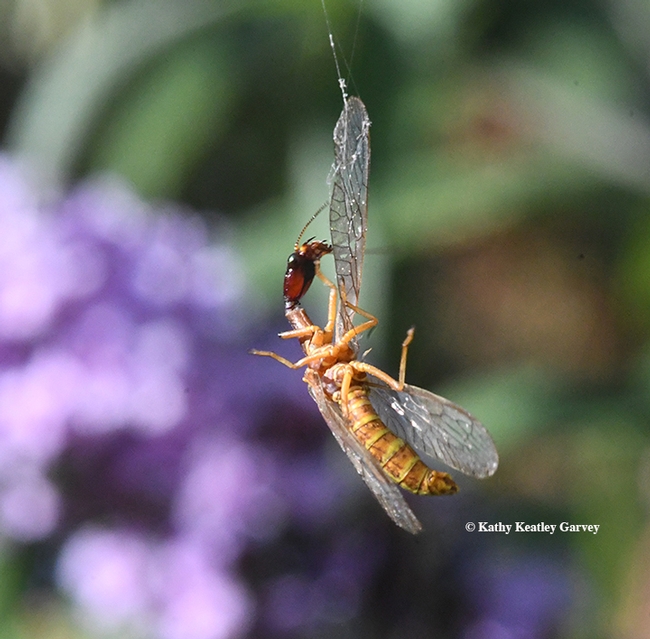
In the end, the score was: Spider, 1; snakefly, 0. (Photo by Kathy Keatley Garvey)

